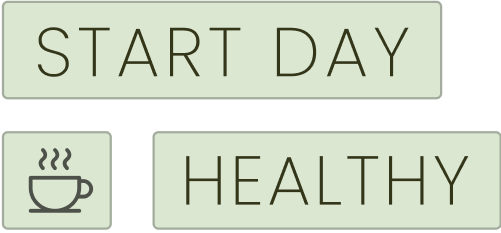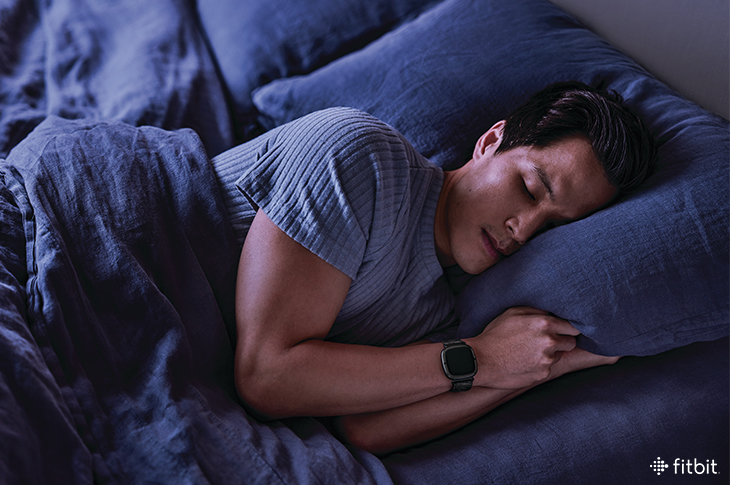Fitbit is always looking for ways to help users sleep better. You may already be aware of some ways your Fitbit can help you get a better night’s rest, especially if you regularly check your Sleep Score, but did you know that we’ve dialed even deeper into sleep insights to help you understand your sleep health in a whole new way?
The personalized Sleep Profile with Fitbit Premium goes beyond nightly tracking to analyze your sleep over a month-long period. It consists of three components: your monthly sleep analysis based on 10 key sleep metrics, education and guidance, and your Sleep Animal. Curious about how Fitbit researchers went about creating this important new feature? Keep reading to learn more—direct from the source.
We chatted with Karla Gleichauf, a research scientist on the Consumer Health Research Team, which leverages Fitbit biometric data to help users sleep better. Her recent work includes studies on population trends in sleep and health outcomes, in addition to inventing and developing the Sleep Profile. As a Fitbitter with nearly 7 years under her belt, Karla has worked in several research areas including physical activity, diabetes, and now sleep. Prior to Fitbit, Karla got a PhD from Stanford in Environmental Fluid Mechanics, working on boats in coastal environments and modeling their flows. Karla has gone from working with sensors in the water to sensors on the wrist.
Where did the idea for Sleep Profile come from?
KARLA: We wanted to help users learn about their sleeping patterns and understand how they could sleep better. This meant developing an experience that assessed users’ sleep health with their Fitbit data. Healthy sleep is not the absence of sleep problems but instead, it promotes physical and mental well-being, and is associated with positive health outcomes.
If we could measure users’ sleep health, we also had the opportunity to see if there were distinct sleeper types, a question that is an active area of research in sleep science. We thought that telling a user about their sleeper type would be a fun, approachable, and nonjudgmental way to learn about their sleep. It would also provide a benchmark of people who sleep like them. With Sleep Profile, we’re able to provide scientific rigor packaged in a delightful way, to provide insight and guidance to users.
Why is Fitbit well positioned to take on this challenge?
Fitbit has been pioneering sleep tracking since 2009, including metrics like Sleep Score to help users get a more granular look at their overall sleep, and incorporating tips for how to become more rested and recharged. Using a Fitbit to track sleep has key advantages, even over a sleep lab. For one thing, you can see a holistic view of sleep metrics dating as far back as you’d like. Thanks to Fitbit’s history, and the prevalence of devices, we set about analyzing 22 billion hours of sleep data.
What were some challenges the team faced?
There is no phenotyping in literature that is inclusive of data we capture at Fitbit. Aside from familiar sleep patterns—like night owls and morning larks—there aren’t universally accepted healthy sleeping patterns that we could reference, so we turned to the data to see if we could find distinct patterns.This was a cross functional effort with people from Google and Fitbit’s data visualization, Product, Design, User Research (UXR), Clinical, and Research & Development teams.
How did the team set about characterizing sleep?
Fitbit researchers initially engineered thousands of features inspired by academic research and observations made with Fitbit’s largest longitudinal sleep dataset available. For example, we developed several metrics describing a user’s difficulty falling asleep, such as a user’s probability of a wake event in the first hour of sleep, and the time it takes them to reach “sound” sleep, inspired by sleep literature’s latency to persistent sleep. We also developed features characterizing sleep architecture, such as average sleep cycle length and how long it takes you to get to various stages of sleep.
We then reduced the features down to the most important using unsupervised machine learning and statistical techniques. We experimented with dividing the population into subpopulations, discovering that there were 6 sleeper type clusters. We then investigated what characteristics were most related to each sleep cluster, and worked with sleep experts in house (sleep neurologist, clinicians, and researchers) and in academia (such as Dr. Michael Grandner and Dr. Allison Siebern, as well as Dr. Logan Schneider) to define which metrics were most important to getting better sleep. We ultimately landed on 10 longitudinal sleep features in the “Monthly Sleep Analysis.”
Five of these metrics are entirely new to Fitbit, which describe users’ sleep habits (sleep schedule variability, days with naps), sleep maintenance (nights with long awakenings, sleep stability), and sleep onset (time before sound sleep).
What did the team discover?
We were surprised to find that a higher occurrence of short awakenings, which are 30 seconds or longer, were associated with better health and fitness, such as lower BMI, lower RHR, and higher active minutes. We discovered that awakenings three minutes or longer was the threshold for when health outcomes began to turn more negative. In addition, we found that there are 6 distinct sleeper types. The most common sleeper type, the Giraffe, tends to not get a lot of sleep but sleep solidly when they do. The least common sleeper type, Dolphin, typically goes to bed at variable times, they sometimes have long awakenings, and they take naps more often than most.
How did you turn the learnings into sleep animals?
Once we identified the sleeper types, we had to decide: what is the appropriate metaphor? How do we convey metaphors in a culturally sensitive way in a globally available product? We tested animals versus other options and decided that animals were the most relatable. Then, we had to figure out which animals to use. Our UXR team spoke to academics and experts in spokescharacters, animism, totemism, and animal sleep patterns.
Did you know?
The animal with the highest proportion of women is the Tortoise, who tends to fall asleep more slowly and get a reasonable amount of sleep overall.
The sleep animal with the oldest users is the Hedgehog, who typically gets lower amounts of deep and REM sleep. The Hedgehog also has the highest proportion of men.
The most common sleeper type is the Giraffe, who tends to not get a lot of sleep but sleep solidly when they do.
The least common sleeper type is the Dolphin, who typically goes to bed at variable times; they sometimes have long awakenings, and they take naps more often than most.
What can users do with this information?
Users may learn how to sleep better from their Sleep Profile. Your Sleep Animal highlights overall trends in your sleep and can help you understand how you sleep relative to others. Your Monthly Sleep Analysis assesses the 10 dimensions of your sleep health and shows you areas of sleep that you’ve been doing well and areas you could improve.
For instance, last month my Sleep Animal was a Giraffe because I tended to go to bed late, get less sleep than most users, but did not have much time spent awake. My Monthly Sleep Analysis showed that my “Sleep Start Time” and “Sleep Schedule Variability” were higher than the ideal range, highlighting that these were the areas I could improve.
Fitbit continues to innovate in sleep tracking. From research, design and beyond, we see sleep as one part of a broader set of health and wellness patterns. The amount or timing of exercise affects sleep, nutrition interacts with sleep quality, long-term changes to daily habits can affect key sleep metrics, and Fitbit helps bring all those areas together to help our users live their best lives.
The post How Fitbit Developed the Sleep Profile Experience appeared first on Fitbit Blog.

